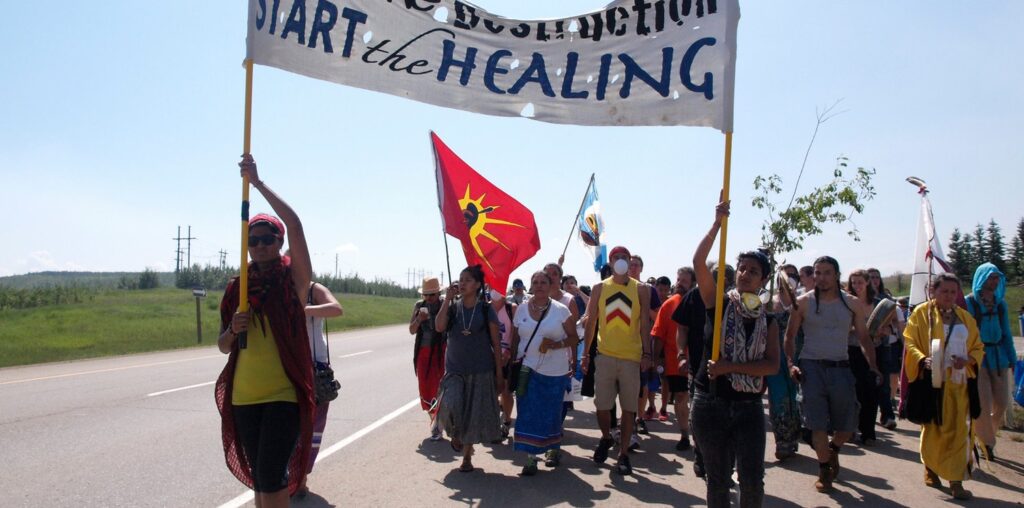
(ANALYSIS) More than a decade ago, I spent a week working in Gatineau, a city on the southern edge of Québec, with the Cree Board of Health and Social Services. I was helping train researchers to interview Iiyiyiu elders about traditional birthing knowledge, so they could develop resources for soon-to-be parents and health care workers.
Throughout our workshop, my colleagues in the Cree Nation of Iiyiyiu Aschii shared their excitement about a “great journey” their youth were undertaking: the Journey of Nishiyuu. A group was traveling 1,000 miles on foot in the dead of winter – all the way from their homes in Whapmagoostui First Nation, on the shores of Hudson Bay, to Parliament Hill in Ottawa, the capital of Canada.
For Indigenous activists, walking the land can take on powerful spiritual and political significance. It has been, and continues to be, an important way Indigenous nations pursue healing, environmental stewardship and diplomacy across Turtle Island, the name many Indigenous groups use to refer to North America.
I am a Canadian scholar whose ancestry stems from Western Europe. I now teach in San Diego, on Kumeyaay territory. My scholarship focuses on Indigenous spiritualities and social movements. Over the past several years, I have worked with Whapmagoostui First Nation – a remote, fly-in community in northern Québec – on research about the Journey of Nishiyuu.
Healing journey
The Journey of Nishiyuu — which translates to”human beings” or “new people” — took place from January-March 2013. More broadly, that season was known as the winter of Idle No More, a movement in support of First Nations’ rights in Canada.
Led by Indigenous women, Idle No More arose when the Canadian government passed C-45, legislation that they feared would reduce environmental protections and weaken consultation with Indigenous communities. The winter of 2012-13 was also when Theresa Spence, the chief of Attawapiskat First Nation, held a hunger strike near Parliament Hill – an effort to hold the government accountable for its treaty obligations and to address the inadequate living conditions in northern reservations.
The Nishiyuu walkers announced that they were walking the land to demonstrate that the Iiyiyiuch are still “keepers” of their “language, culture, and tradition,” and honoring their ancestors. Many individual walkers also spoke about the experience as a healing journey.
“For the youth here there is no better place to be than out on the land,” said David Kawapit, the young walker who initiated the journey, when I interviewed him in Whapmagoostui.
The walkers started off their journey in snowshoes, traveling along traditional trap lines and trading routes. As they moved farther south, the trail turned to highways, and walkers exchanged moccasins and snowshoes for boots and running shoes. Throughout the journey, walkers were hosted by other Iiyiyiu, as well as other Indigenous and non-Indigenous communities, where they shared stories, food and prophecies with one another.
When the group set off in January, it consisted of only six young walkers from Whapmagoostui and their elder guide, the late Isaac Kawapit. By the time they reached Parliament Hill, however, the movement had grown to approximately 270 people of many ages and cultural backgrounds.
This was not just a walk for the Cree Nation. The journey was also intended to strengthen inter-Indigenous relations across Canada during Idle No More. The Nishiyuu walkers embarked on their journey to emphasize the important role land plays in shaping their sense of well-being, their culture and their communities’ political autonomy.

